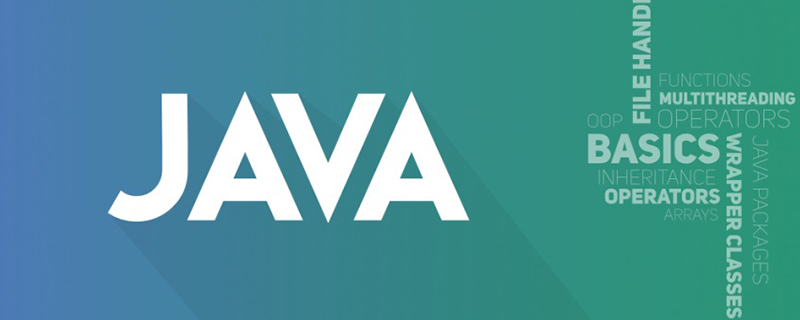This article brings you relevant knowledge about java, which mainly introduces issues related to generics, including custom generic classes, custom generic methods, custom Let’s take a look at generic interfaces and other contents. I hope it will be helpful to everyone.

Recommended study: "java video tutorial"
Advantages:
public static void main(String[] args) {
List<String> list = new ArrayList<>();
list.add("石原里美");
list.add("工藤静香");
list.add("朱茵");
for (String s : list) {
System.out.println(s);
}
}
输出结果:
石原里美
工藤静香
朱茵
And generics can be defined in many places, such as the generic class after the class, the generic method after the method declaration, and the generic interface after the interface. Next, let’s learn how to use these generics together:
public class MyArrayList<E>{ }
Now create a generic class to implement basic add and delete operations to learn more about its usage:
//泛型类MyArrayLIst
public class MyArrayLIst<E> {
public void add(E e){
}
public void remove(E e){
}
}
//main
public static void main(String[] args) {
MyArrayLIst<String> list = new MyArrayLIst<>();
//通过对泛型的设定,实现对数据专一处理
list.add("石原里美");
list.add("工藤静香");
list.remove("工藤静香");
}
Principle of generic classes:
Replace all occurrences of generic variables with the real data type transmitted.
Through careful observation, it is not difficult to find that the biggest difference between generic classes and ordinary classes is that the same data can be processed uniformly when calling methods, and other data types will not be involved. To a certain extent, problems that may arise during forced type conversion are avoided.

public <E> void view(E e){ }
No matter what type of array is passed in, its content can be returned, that is, the function of Arrays.toString() is realized
public static void main(String[] args) {
String [] name = {"石原里美","工藤静香","朱茵"};
view(name);
Integer [] age = {18,19,20};
view(age);
}
public static <T> void view(T[] arr){
StringBuilder list = new StringBuilder();
for (int i = 0; i < arr.length; i++) {
list.append(arr[i]).append("\t");
}
System.out.println(list);
}
Pass Implementing the definition of generic methods can realize the reception of multiple data types and have a wider range of applications.
public interface People <E>{ }
//People接口
public interface People <E>{
void run(E e);
void height(E e);
}
//Student类
public class Teacher {
}
//实现类Fantype
public class Fantype implements People<Teacher> {
@Override
public void run(Teacher teacher) {
}
@Override
public void height(Teacher teacher) {
}
}Through the above Observing the code, we can find that what type is defined after People, then the implementation class can only operate on this data type, and other types cannot perform this operation.
假设现在有一场为学生和老师而举办的比赛,需要比较速度究竟谁更快,分别创建一定数量的对象并将其传入集合之中。然而当我们将这两个集合分别传入方法中的时候,会发现,学生对象集合list2出现报错,为什么呢?原因是因为数据类型不同,那么该如何使得两种类型都可以传入呢?或许这个时候就会有人说了:“既然两个类都是People的子类,那么为什么不定义它的泛型是People呢?”这个想法很好,但是我们需要明确一点的是子类与父类虽然是有关系的,但是定义之后的集合是没有关系的,所以这里是行不通的。
//main
//老师对象集合
ArrayList<Teacher> list1 = new ArrayList<>();
list1.add(new Teacher());
list1.add(new Teacher());
pk(list1);
//学生对象集合
ArrayList<Student> list2 = new ArrayList<>();
list2.add(new student());
list2.add(new student());
pk(list2);//由于pk方法的形参是泛型为Teacher的集合,所以会报错
//父类
class People{
}
//子类
class Teacher extends People{
}
class student extends People{
}
//pk方法:
public static void pk(ArrayList<Teacher> people){
}
应对这个问题,我们可以便可以将本篇文章引入的知识“通配符”放在实际应用中解决问题了,通过其简短的概念“?可以在‘使用泛型’的时候代表一切类型”就可以理解其作用了,这里我们可以使用“?”共同代表两种类型。
public static void pk(ArrayList<?> people){
//通过通配符?便可以将这个问题解决掉
}
然而此时又出现一个问题,定义了一个dog类,试图创建一些对象并传入集合中混入比赛,这种当然情况当然是不允许发生的,然而?是可以表示任意类型的,并不能对其进行限制。因此上下限的作用就体现出来了:
public static void pk(ArrayList<? extends People> people){
//通过上下限便可以将这个问题解决掉
//要求传入的类型必须是People的子类才可以
}
推荐学习:《java视频教程》
The above is the detailed content of Let’s understand generics in Java together. For more information, please follow other related articles on the PHP Chinese website!